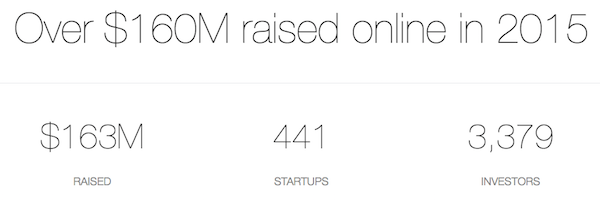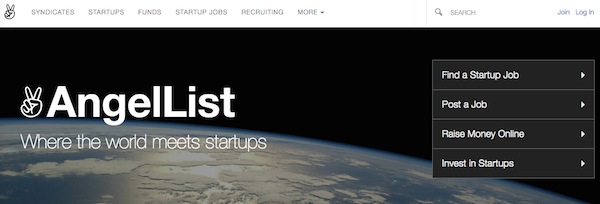The equity crowdfunding tidal wave is coming! In case you haven’t heard, you’ll now be able to invest in start companies online through an equity crowdfunding portal. It’s no longer limited to accredited investors.
Thus far, there have been a few early movers in this space. AngelList and SeedInvest have certainly caught my eye. I’m going to break down some of the differences between these two platforms and help you decide which to choose!
AngelList
Angel List was founded in 2010 and aims to connect angel investors with tech startups. At the time of writing, the company has raised about $600 million in funds to continue its operation. As of 2015, over $160 million was raised through the website from 3k+ investors for 441 startups.

Private deals were about 40% of the overall funding rounds and there were institutional funds in 40% of the rounds.
In addition to providing a marketplace where startups can connect with investors, Angel List also has a job marketplace that links up job seekers with startups hungry for new talent. There were 548K “job matches” in 2015.
Aside from the job marketplace and having a large amount of clout among investors, I think that there is one major difference that sets Angel List apart from equity crowdfunding platforms like SeedInvest. One word: syndicates.
“A syndicate allows investors to participate in a lead investor’s deals. In exchange, investors pay the lead carry.”
Basically, there are professional angel investors out there who have access to deal flow and a tremendous amount of experience. Those investors can choose to lead a syndicate. In exchange, they get access to more investors for the deal and get carry.
Carry is a form of compensation to the head of the investment syndicate. Simply put, it’s a percentage of the fund’s net profits. The lead investor usually provides about 16% of the overall capital.
“On average, syndicates charge 19.5% deal carry, which is equivalent to a 25% fund carry.” – Source
On the plus side, a startup will get more capital with fewer investor interactions and back and forth communication with the lead investor.
Cost: Investors pay 0- 25% deal carry to the lead of their syndicate and 5% deal carry to AngelList Advisors, along with out-of-pocket costs. There are no management fees.
SeedInvest
SeedInvest was launched in 2013 as an equity crowdfunding platform with the mission to connect startups and investors online. The website actually self-funded it’s own Series A round for $4.15 million.
According to the press release, “SeedInvest met its initial $3 million goal in only one week and accepted $1.15 million of additional commitments before ending its campaign just a week later.”
The company “raised the first $2 million from prominent venture capital firms…then closed $2.15 million from forty-two angel investors through the SeedInvest platform. During the two-week campaign, over 3,000 prospective investors accessed the investment opportunity and more than 400 signed-up as new investors on the platform.”
Most companies on SeedInvest are looking to raise between $100,000 – $50,000,000 and are technology or consumer-centric businesses. They should have already attracted a lead investor and set their funding terms. The website doesn’t say much about the lead investor for equity crowdfunding rounds.
Cost: 7.5% placement fee on the total amount raised, if successful, plus a 5% warrant coverage. Warrant coverage is basically the option to buy more stock in your company at the price that was originally paid. The placement fee is paid to North Capital or SI Securities, which are the website’s partner broker-dealers. Also, you should expect up to $4,000 in due diligence, escrow, marketing and legal expense reimbursements.
Which is right for you?
As you can see, there are some pretty big differences between AngelList and SeedInvest, mainly in their fees and how the deal is structured. I would recommend checking out both of their websites, as I’m willing to bet their rules will change in the future, especially with Title III of the jobs act.
At the end of the day, it comes down to your company, what you’re raising money for, and how you want the deal structured. I hope this post gave you a good overview of some of the differences. If you enjoyed it, take a second to leave a comment below!






